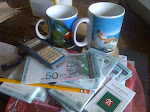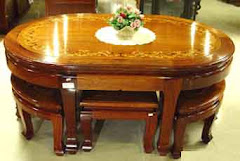Nothing is more important to making a good first branding impression than your business card.
In addition to the information included, a card's look and feel also sends a strong message about your business.
The cardinal rule to creating a good business card is to ensure that it reflects your company's image. From a branding perspective, this means it should match the look and feel of your logo. Yes, you want your card to be unique. Yes, you want people to remember you by it. But if you break the cardinal rule in pursuit of uniqueness, all people will remember seeing is an unusual business card. They won't remember your brand or its attributes.
So in the interest of sparing you a potential branding misstep, here are the blunders of new companies make when creating their business cards:
Choosing low-quality paper stock.
Inexpensive paper stock may save you money, but it often leaves you with a card that feels cheap. Touch is an important sense and plays a role in memory recall. How you appeal to this sense depends on your company's image. For example, B2B companies wanting to convey reliability should use a substantial, mid-weight stock.
Using a design template that does not match the logo.
Assuming you want a business card to be taken seriously and help brand your company, you need a design that works with your logo. In other words, be extremely careful with template-based designs. If the templates weren't developed specifically to match your logo--and most aren't--they probably won't. Many entrepreneurs fall in love with an over-designed template that distracts from their logo, or one that features an unrelated photograph. Photographs work well in marketing brochures, but if they appear on a business card, they will distract from your logo.
Adding too much color to the card.
When you want to get someone's attention, do you scream? Probably not, if you want to avoid scaring them. So why scare potential customers with a super-bright, rainbow-colored card? Color is your biggest asset in branding your company. Research indicates that color is the most important factor in memory recall. Tie your business to one or two specific colors; this color should also appear in your logo.
Making the card too unique.
You want your card to stand out, certainly, but not so much that its difference makes people uncomfortable. Complex dye-cuts, extremely oversized cards, and odd card stocks (like metal) should be used only by companies engaged in highly customized or creative endeavors. Custom embossing, rounded corners, or varnishes are better touches for most companies. While it's tempting to create an oversized card, keep in mind that many people still use Rolodexes or tuck cards into their wallets--both difficult to do with unusually sized cards. Function overrides form.
Making the logo gigantic.
In general, the bigger the company, the smaller its logo appears on business cards. If you want to look like a Fortune 500, size your logo appropriately. Instead of enlarging your logo for emphasis, employ white space to bring attention to it.
If you're looking to make a lasting impression, don't cheapen your first impression. Build a better business card and you'll build a better business.
Subscribe to:
Post Comments (Atom)










































































































No comments:
Post a Comment